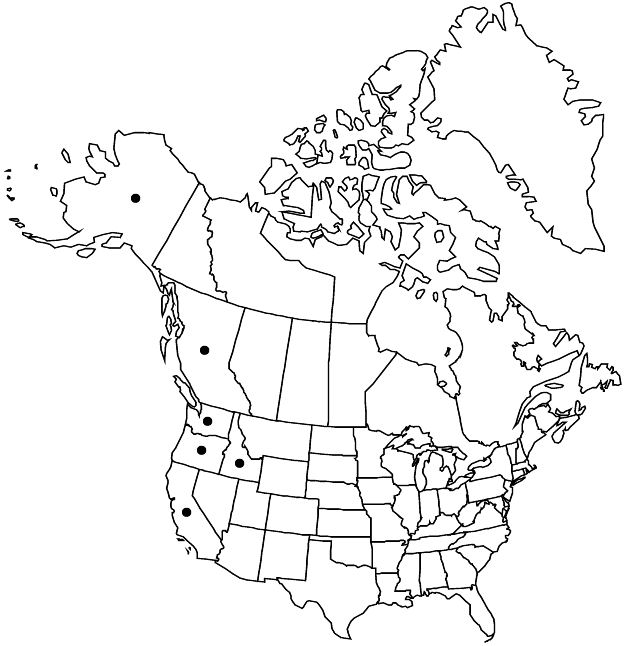Viola sempervirens
Pittonia 4: 8. 1899.
Plants perennial, caulescent, stoloniferous, 10–30 cm; stolons green or reddish, leafy, sometimes rooting at nodes, becoming lignified in age. Stems 1–5, prostrate, spreading, glabrous or sparsely puberulent, from current and/or previous year’s growth, on usually vertical, fleshy rhizome, rooting and forming rosettes at or near tip; rooted rosettes often develop into an erect, fleshy caudex from which new stems are produced. Leaves evergreen, basal and cauline; basal: 1–6(–10); stipules deltate to ovate or linear-lanceolate, margins entire or glandular-toothed, apex acute to long-acuminate; petiole 2–16 cm, glabrous; blade often purple-spotted abaxially and/or adaxially, orbiculate to ovate, 1–4.5 × 2–3.9 cm, base cordate to truncate, margins crenate, eciliate, apex blunt to obtuse, mucronulate, surfaces glabrous or with scattered bristles on one or both surfaces; cauline similar to basal except: stipules deltate to lanceolate, margins entire or sparingly toothed; petiole 0.3–3 cm; blade 1.2–2.2 × 1.2–2 cm. Peduncles 5–10 cm, glabrous. Flowers: sepals lanceolate to ovate-lanceolate, margins eciliate, auricles 1–2 mm; petals lemon-yellow on both surfaces, lower 3 and sometimes upper 2 brownish purple-veined, lateral 2 bearded, lowest 8–17 mm, spur yellow or whitish, gibbous, 1–2.5 mm; style head bearded; cleistogamous flowers axillary. Capsules mottled with purple, spherical to ovoid, 5–8 mm, glabrous. Seeds brown, tinged purple, 2–2.5 mm. 2n = 24, 48.
Phenology: Flowering Jan–Jul.
Habitat: Redwood forests, other coastal forests, Douglas fir, other coniferous forests
Elevation: 30–1400 m
Distribution

B.C., Alaska, Calif., Idaho, Oreg., Wash.
Discussion
In California, Viola sempervirens occurs in shaded redwood forests and other coastal forest habitats. In Oregon and Washington, it occurs in Douglas fir and other coniferous forests, where it can form mats (clones) one meter or more in diameter; its prostrate, spreading growth habit is similar to V. walteri. The leafy stems of V. sempervirens are similar to the leafy stolons of V. odorata.
Selected References
None.